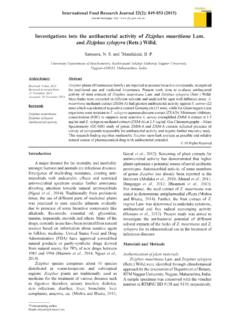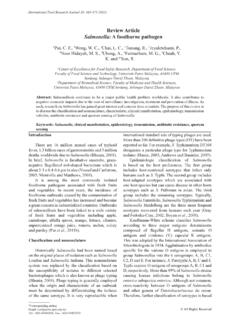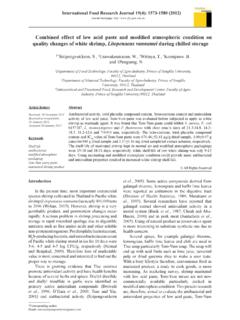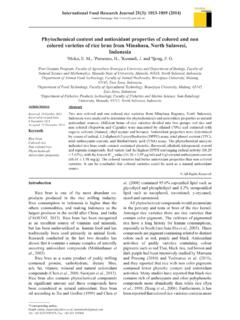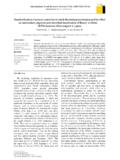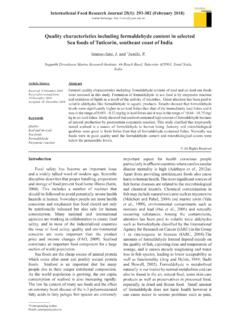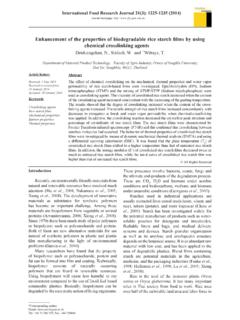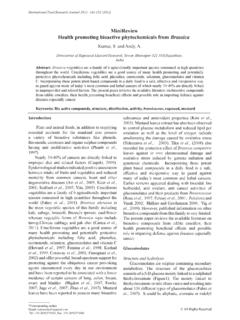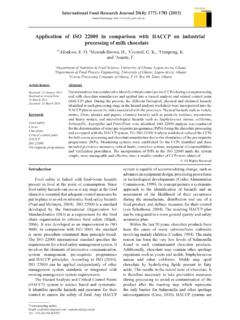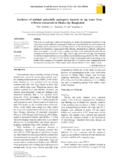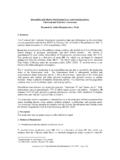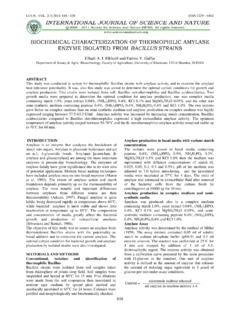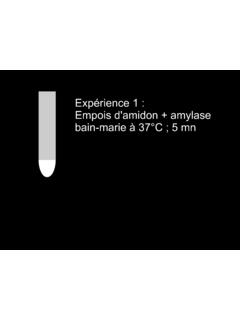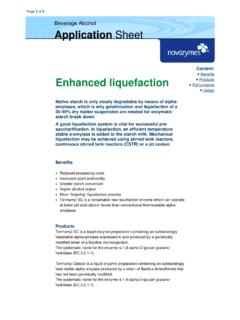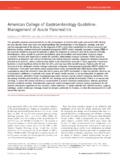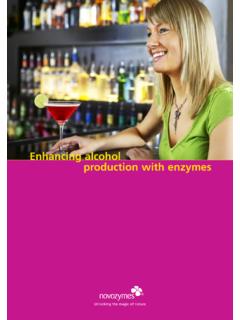Transcription of Optimization of raw-starch-digesting amylase …
1 International Food Research Journal 23(3): 1280-1288 (2016). Journal homepage: Optimization of raw-starch-digesting amylase (RSDA) production medium for Enterococcus faecium DMF78. 1*. Duque, , 1 Dizon, , 2 Merca, and 3 Flores, 1. Food Science Cluster, College of Agriculture, University of the Philippines Los Ba os, College, Laguna, Philippines 2. Institute of Chemistry, College of Arts and Sciences, University of the Philippines Los Ba os, College, Laguna, Philippines 3. Department of Food Science and Chemistry, College of Science and Mathematics, University of the Philippines Mindanao, Mintal, Davao City, Philippines Article history Abstract Received: 11 June 2015 In an effort to lower the cost of raw-starch-digesting amylase (RSDA) production for E. faecium Received in revised form: DMF78, statistical tools were used to optimize production parameters.
2 Plackett-Burman and 22 August 2015 Box-Behnken has been carried out to evaluate the effects of 17 different parameters and Accepted: 27 August 2015. conditions. Proteose peptone, beef extract, and MRS salts were found to be positive significant effectors for amylase production. On the other hand, yeast extract, sodium dodecyl sulfate (SDS), and corn steep liquor (CSL) were negative effectors. The optimized medium resulted to Keywords a increase in amylase activity and decrease in cost compared to the modified MRS medium with the elimination of yeast extract, trub, SDS, and CSL. Enterococcus faecium raw-starch-digesting amylase Plackett-Burman Box-Behnken All Rights Reserved Introduction faecium DMF78 (Tabanao, 2008) for the production of raw-starch-digesting amylases (RSDA) have been Today, there is an on-going global campaign explored.
3 Towards a greener environment that promotes the Raw starch digesting amylases (RSDAs) have use of more environment-friendly products. This received a great deal of attention because of their allows the maximization of natural resources needed perceived technological significance and economic for the conversion of biomass, such as starch, into benefits. RSDAs have the capability of hydrolyzing high value products. One step taken was the use of the native form of starches that can be used for the microorganisms as potential source of industrially production of simple constituent sugars, which can be important enzymes such as amylases. These enzymes processed for the production of high value products have the capability of hydrolyzing starch into smaller like high fructose syrup (Limbaga, 2007), ethanol molecules of sugars or dextrins that is necessary to (Bandaru et al.)
4 , 2006), and lactic acid (Cheng et al., circumvent the use of high temperatures for long 1991). RSDAs circumvent not only the gelatinization- hours (gelatinization and liquefaction) in a traditional liquefaction steps but also the saccharification step starch hydrolysis process. needed for the conversion of starch to simple sugars. Successful isolation of amylase producing In other words, it allows the entire process of starch (amylolytic) microorganisms has been well hydrolysis to proceed at a faster rate and at a lower documented. Examples of these isolates are cost. Lactobacillus amylophilus JCM 1125 (Nakamura Another factor that contributes to microbial and Crowell, 1979; Yumoto and Ikeda, 1995), enzyme cost is the production medium. According to L. amylovorus JCM 1126 (Nakamura, 1981), Babu and Satyanarayana (1993), enzyme production L.
5 Plantarum A6 (Giraud et al., 1994) and L. by microorganisms is significantly affected by manihotivorans LMG 18010T (Guyot et al., 2000). various physical and chemical parameters. There Aside from the previously mentioned isolates, the are different kinds of widely available substrates, utilization of Bacillus sp. (Kelly et al., 1995), Bacillus minerals, carbon, and nitrogen sources to consider in sp. (Goyal et al., 2005), Cytophaga sp. (Shiau et al., enzyme production medium formulation. To reduce 2003), Lactobacillus sp. (Aguilar et al., 2000), and E. the cost of enzyme production medium, one must *Corresponding author. Email: Tel: +63 049 536 2303. 1281 Duque et 23(3): 1280-1288. determine the cheapest possible set of components read at 660 nm. One unit of amylase activity is defined for the medium. The traditional way of screening as the amount of enzyme required to hydrolyze 1 mg variables is the one-variable-at-a time concept of soluble starch for 10 minutes at specified assay that has shown to work well when applied to process conditions.
6 Designs, especially in cases where only a small number of variables are being studied. However, this Optimization of amylase production media may become a problem when applied to an experiment that needs to consider large number of variables. This Screening of factors by Plackett-Burman design traditional method is time consuming, expensive, and A randomized design utilizing the Plackett- does not allow the understanding of the interactions Burman design (PBD) was generated using Minitab . between the factors considered (Weuster-Botz, 2000 Statistical Software. Seventeen factors were and Silva and Roberto, 2001). Nowadays, the use considered (effects of initial pH, substrate pre- of statistical designs such as Plackett-Burman and treatment, agitation (rpm), % inoculum size, %. Box-Behnken has been carried out. These advance substrate, Ca2+ concentration, % MRS salts, % sodium statistical approaches offer a design that allows dodecyl sulfate, % Tween 80, % Triton X-100, %.)
7 The study of several factors that requires minimum yeast extract, % proteose peptone, % beef extract, %. number of runs, thus, saving time and resources. corn steep liquor, % wort, % trub, and % urea). Low These also allow the screening of critical factors; and high values were considered based on literature. provide information regarding optimized levels of Table 1 shows the different factors considered in each factor and knowledge of the interactions between uncoded levels. factors and its effect on amylase activity. Successful The various media, based in the experimental Optimization of amylase production medium, carried design, were prepared in flasks. Right amounts of out using statistical designs, were reported by Sharma cell suspension were introduced. The flasks were and Satyanarayana (2011) using Bacillus acidicola, incubated at room temperature for 6 hours (0 rpm, Hashemi et al.
8 (2010) using Bacillus sp., and Dey et 50 rpm, and 100 rpm). Enzymes were harvested from al. (2001) using Bacillus circulans GRS 313. the media by centrifugation at 10,000 rpm, 4 C for 10 minutes. Enzymatic activity was checked. Materials and Methods Washed cells, mixed in 70 mL sterile ultrapure water, served as the starter inoculum for the Microorganism Optimization studies of amylase production. Pure culture of E. faecium DMF78 was obtained from the Department of Food Science and Chemistry, Optimization of factors by Box-Behnken design University of the Philippines Mindanao. Stock Based on the analysis using PBD, Box-Behnken cultures were prepared using a modified MRS design (BBD) was employed to establish the optimal medium (sago starch as substrate). values for the identified factors to study. Five percent cell suspension was inoculated onto various prepared Wort preparation media and controls and incubated at 30 C for 6 hours Germination of sorghum was done according without agitation.
9 The extracellular enzymes from the to Igyor et al. (2001). Worting was done according media were harvested by centrifugation and enzyme to Agu and Palmer (1999) with modifications. Fifty activity was checked. grams of sorghum malt was added with 360 mL of distilled water pre-equilibrated at 65 C, and stirred at Verification of the optimized medium: shake flask 250 rpm for 1 hour at 65 C. fermentation and time course analysis amylase production using the optimized medium Enzyme assay was verified 5 times to confirm the Optimization amylase activity was determined using the starch results. Time-course analysis was done using the 2-L. reduction analysis procedure according to Yoo et al. Fermentor (Labo Controller MDL-8C, BNRN-2L. (1987) with modifications. Pre-equilibrated substrate Marubishi). The optimized enzyme production solution at 30 C was added with 100 L enzyme and medium was incubated at 30 C for 24 hours, at pH.
10 Incubated for 10 minutes. The reaction was stopped and agitated at 48 rpm. Samples were collected with the addition of 1 mL of M HCl. Five hundred at 0, 15th, 30th and 45th minute and 1st, 2nd, 4th, 6th, 12th, micro liters of the sample was obtained as aliquot and 18th, and 24th hour of fermentation. Crude enzyme was was added with 5 mL working iodine reagent. The harvested by centrifugation and enzyme activity was solution was allowed to stand for 5 minutes and was checked. Microbial count (CFU/mL) was determined /IFRJ 23(3): - 1282. Table considered and its corresponding uncoded levels by pour-plating methods. The colonies were counted Seventeen factors were investigated and an upper after 24 hours and reported as CFU/mL. limit of for proteose peptone and beef extract, for yeast extract, and 100% (based from the Statistical analyses original formulation) MRS salts were previously set.
